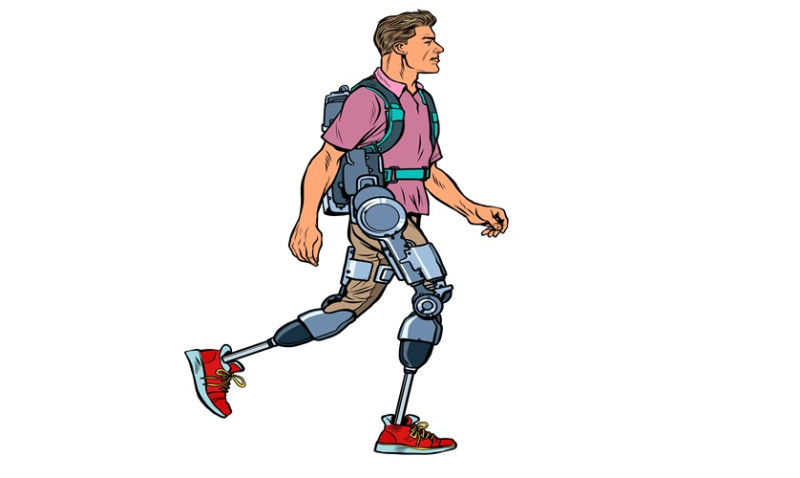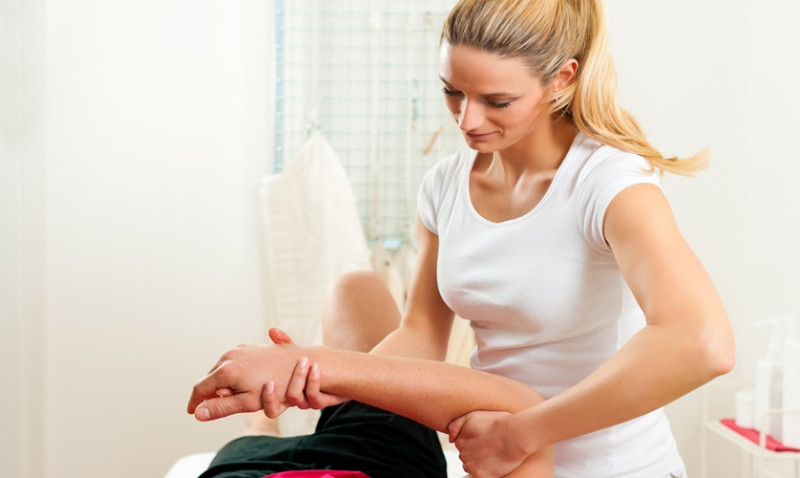
Imagine regaining the ability to walk after years—or a lifetime—of restricted mobility. While it may sound like science fiction, cutting-edge advancements in wearable robotics are turning this into reality. Enter the exoskeleton: a revolutionary piece of assistive technology that is changing lives across the globe. From hospital rehabilitation centers to everyday homes, exoskeletons are helping people with disabilities, especially those with spinal cord injuries or muscular degenerative diseases, to regain mobility, independence, and hope.
What is an Exoskeleton?
At its core, an exoskeleton is a wearable robotic suit designed to support and enhance the body’s natural movement. Think of it as a high-tech frame that wraps around the body and provides mechanical support and strength. Most medical exoskeletons are powered by electric motors, hydraulics, or pneumatics and are controlled by sensors and onboard computers that adapt to the user's movement patterns.
These devices work in tandem with a person’s own musculoskeletal system or, in the case of complete paralysis, operate independently of it. Sensors detect subtle upper-body motions or inputs from joysticks or control pads, enabling the device to move in sync with the user’s intent. For users with limited mobility, this means walking upright without the need for wheelchairs or crutches.
Exoskeletons are not limited to aiding those with spinal injuries; they’ve also shown success in supporting stroke recovery patients, people with multiple sclerosis, and even elderly users who need extra stability during rehabilitation.
Benefits of Exoskeleton Technology
The physical benefits of using exoskeletons are immense. Regular use can help improve posture, circulation, digestion, and muscle activity. In many cases, users who were previously confined to wheelchairs have reported reduced pressure sores and improved bone density due to increased physical activity while upright.
But the impact goes beyond the physical. Standing and walking can dramatically enhance mental well-being and self-esteem. Many users describe a significant boost in confidence and independence after using an exoskeleton for the first time. There's something incredibly empowering about looking someone in the eye rather than from the seated perspective of a wheelchair.
Social benefits also follow. People using exoskeletons are more likely to engage in conversations, attend public events, and participate in hobbies that require standing or moving around. The technology empowers users to reclaim aspects of their lives that were once inaccessible, fostering stronger social bonds and uplifting their quality of life.
Applications in the UK: Healthcare, Home, and More
In the UK, several hospitals and physiotherapy centres are already integrating exoskeleton technology into their rehabilitation programmes. NHS trusts in cities like London, Bristol, and Manchester are actively exploring placements for powered exosuits as part of stroke and spinal injury recovery initiatives. They provide state-of-the-art support for patients learning to walk again or regain leg functionality after trauma.
What's especially exciting is the movement towards home-use exoskeletons. With the technology becoming more compact and user-friendly, disabled individuals can now access therapy without frequent hospital visits. Some UK-based companies even offer rental solutions or long-term hiring plans for those who want to integrate rehabilitation into their daily life from the comfort of home.
In workplace settings, particularly in physically demanding sectors such as construction or warehousing, lightweight industrial exoskeletons are being introduced to reduce strain and prevent injuries—another frontier where health tech intersects with everyday working life.
Recent Innovations and Designs
Modern exoskeletons are more advanced, more functional, and—importantly—more stylish than ever. Many recent models feature lightweight carbon-fibre frames, ergonomic padding, and intuitive app-based controls. Several are designed with sleek aesthetics, allowing the wearer to move more naturally and blend seamlessly into everyday environments.
Innovators in Britain and abroad have also prioritised modularity, meaning the suits can be adapted for different users or upgraded with new functions over time. Machine learning is being applied to refine movement tracking and predictive algorithms, enhancing the responsiveness and comfort of each step taken.
Battery technology has also seen significant improvements. Modern units can run for hours on a single charge and include quick-swap features for long-term use. This is critical for users who may want to wear them in professional settings or for extended walking therapy sessions.
Challenges and Considerations
Despite its promise, exoskeleton technology is not without hurdles. One of the biggest barriers is cost. Currently, many models on the market come with price tags ranging from £40,000 to over £100,000. While rental and healthcare-supported options help offset this, greater affordability remains key to widespread adoption.
Another consideration is training. Users typically require professional onboarding to learn how to use the suit safely and effectively. This often includes balance training, adherence to safety protocols, and physiotherapy assessments—making partnerships between tech providers and healthcare professionals crucial.
Accessibility isn’t just about physical access; it’s about digital and educational access, too. Information on how to acquire, use, and troubleshoot exoskeletons must be presented in a way that all users can understand. As with any new technology, public awareness campaigns play a vital role in spreading understanding and trust.
The Future of Mobility in the UK
With innovation happening at a breakneck pace, the future of mobility looks brighter than ever for UK residents with disabilities. Experts predict that within the next decade, personal exoskeletons could become as common as electric wheelchairs, making them a staple of accessible living spaces, mobility centres, and even retail offerings.
In terms of cultural integration, there’s opportunity for British designers and engineers to push the boundary between fashion, function, and accessibility. Expect a wave of products that not only improve lives but look good doing it—thanks in part to increasing awareness among architects, interior designers, and DIY-savvy homeowners embracing inclusive design principles.
Why It Matters to You
Whether you're an architect designing an accessible home, a DIY enthusiast modifying your living space, or a professional tradesperson working on inclusive builds, understanding the role of exoskeletons matters. These devices are shaping the future of accessible design and redefining mobility across the UK.
More than just medical tools, exoskeletons are powerful symbols of progress, inviting everyone—from healthcare workers to home designers—to rethink how support, freedom, and technology can coexist in everyday life and design. The conversations you start today about accessibility could influence the buildings, systems, and spaces of tomorrow.
As this tech becomes more accessible and more personalised, expect to see more of it within domestic spaces, rehab centres, and public architecture. Inclusive design is no longer optional—it's essential. And wearable tech like exoskeletons plays a pivotal role in making it a reality.





